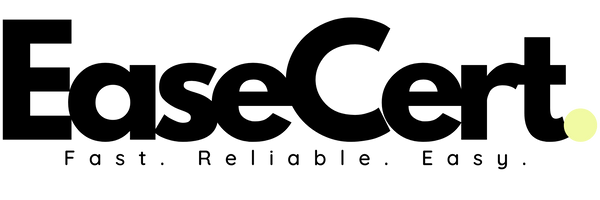
GPSR Declaration of Conformity
The GPSR establishes a robust framework to ensure product safety within the European Union. A key aspect of this framework is the Declaration of Conformity (DoC), a document wherein manufacturers assert that their products comply with applicable EU safety requirements. This guide explores the GPSR Declaration of Conformity, its significance, and the broader regulatory landscape where a DoC is required.
What is a Declaration of Conformity (DoC)?
A Declaration of Conformity (DoC) is a self-declaration made by manufacturers, stating that their product meets the relevant EU legislation. It serves as official documentation that the product has undergone necessary assessments, complies with safety and performance requirements, and can be legally placed on the EU market.
Key Components of a Declaration of Conformity
A DoC typically includes the following:
- Manufacturer's Details: Name, address, and contact information.
- Product Identification: Clear identification of the product, including model or serial number.
- Compliance Standards: List of EU directives and harmonized standards the product complies with.
- Authorized Signatory: Name and position of the responsible person.
-
Date and Place of Issue: When and where the declaration was signed.
Regulations Requiring a Declaration of Conformity
In the EU, manufacturers must create a Declaration of Conformity for various consumer products under several key regulations. Below are the major regulations where a manufacturer can issue a DoC:
1. General Product Safety Regulation (GPSR) – Regulation (EU) 2023/988
- Scope: Applies to all consumer products not covered by specific sectoral legislation.
- DoC Required: Yes, to demonstrate compliance with general safety requirements.
- Key Elements: Risk assessment, technical documentation, and traceability details.
2. REACH Regulation (EC) No 1907/2006
- Scope: Covers chemicals, substances, mixtures, and articles that may release substances.
- DoC Required: Not mandatory by law, but suppliers often issue a REACH Compliance Declaration.
3. RoHS Directive 2011/65/EU (Restriction of Hazardous Substances)
- Scope: Applies to electrical and electronic equipment.
- DoC Required: Yes, to confirm compliance with restricted substance limits.
4. EMC Directive 2014/30/EU (Electromagnetic Compatibility)
- Scope: Applies to electrical and electronic devices that may generate electromagnetic interference.
- DoC Required: Yes.
5. Low Voltage Directive (LVD) 2014/35/EU
- Scope: Covers electrical equipment operating at 50-1000V AC or 75-1500V DC.
- DoC Required: Yes.
6. Machinery Directive 2006/42/EC
- Scope: Applies to machinery, including safety components.
- DoC Required: Yes.
7. Toy Safety Directive 2009/48/EC
- Scope: Covers toys designed for children under 14 years old.
- DoC Required: Yes.
8. Personal Protective Equipment (PPE) Regulation (EU) 2016/425
- Scope: Covers all forms of personal protective equipment.
- DoC Required: Yes.
9. Gas Appliances Regulation (EU) 2016/426
- Scope: Covers appliances burning gaseous fuels.
- DoC Required: Yes.
10. Pressure Equipment Directive (PED) 2014/68/EU
- Scope: Covers equipment like boilers, pressure cookers, and storage tanks.
- DoC Required: Yes.
11. Construction Products Regulation (CPR) (EU) No 305/2011
- Scope: Covers materials used in construction.
- DoC Required: Yes.
12. Energy-Related Products (ErP) Directive 2009/125/EC
- Scope: Covers products that consume energy.
- DoC Required: Yes.
13. Textile Labelling Regulation (EU) No 1007/2011
- Scope: Covers textile fiber content labeling.
- DoC Required: While not mandatory, manufacturers often issue a compliance statement.
14. EcoDesign Directive 2009/125/EC
- Scope: Sets requirements for energy-using products to improve environmental performance.
- DoC Required: Yes.
15. Medical Devices Regulation (MDR) (EU) 2017/745
- Scope: Covers medical devices for diagnosis, prevention, or treatment.
- DoC Required: Yes, for Class I devices (non-sterile, non-measuring).
16. Cosmetic Products Regulation (EC) No 1223/2009
- Scope: Covers cosmetic products intended for human use.
- DoC Required: No official DoC, but a Product Information File (PIF) serves as proof of compliance.
17. Food Contact Materials Regulation (EC) No 1935/2004
- Scope: Covers materials intended to come into contact with food.
- DoC Required: Yes, for certain materials like plastics and ceramics.
18. Battery Regulation (EU) 2023/1542
- Scope: Covers the design, production, and disposal of batteries.
- DoC Required: Yes, under specific conditions.
19. EcoLabel Regulation (EC) No 66/2010
- Scope: Products meeting specific environmental criteria can be marked with the EU Ecolabel.
-
DoC Required: Yes.
Summary of Key Principles for Creating a DoC
To ensure compliance, a DoC should:
- Include product details (model, type, serial number).
- Reference relevant EU legislation and harmonized standards.
- Identify the manufacturer or their Authorised Representative.
- Include the name and signature of the responsible person.
- Be available in an official EU language.
Conclusion
The GPSR Declaration of Conformity plays a vital role in ensuring product safety and legal compliance in the EU market. While GPSR itself does not explicitly mandate a DoC, many other EU directives and regulations require one. Maintaining thorough technical documentation and adhering to the DoC framework allows manufacturers to confidently place their products on the market while ensuring consumer safety.
Get Expert Guidance on GPSR Compliance
At EaseCert, we specialize in helping businesses meet GPSR compliance requirements efficiently and accurately. Our GPSR risk assessment template provides a comprehensive framework for evaluating product safety risks, ensuring full compliance with EU regulations. Contact us today for expert guidance on risk assessments, regulatory obligations, and product certification solutions. Contact us for expert guidance on risk assessments, regulatory obligations, and certification solutions.
Learn More About GPSR:
